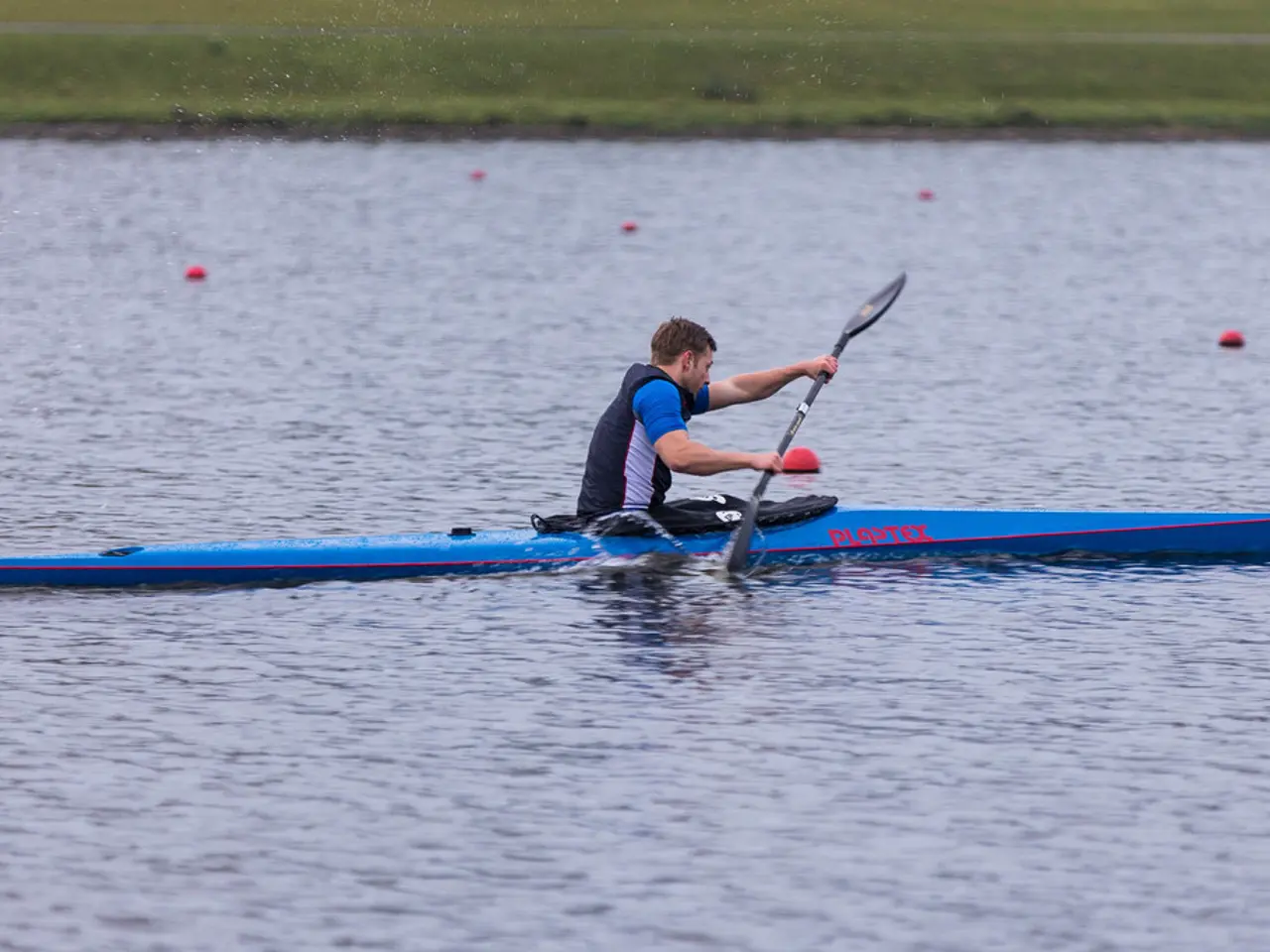Guide to Selecting the Perfect Kayak
Navigating the world of kayaks can be overwhelming, but with the right information, you can find the perfect vessel for your paddling adventures. Here's a comprehensive guide to help you make an informed decision.
For beginners and casual paddlers, sit-on-top kayaks are an excellent choice. They are designed for stability, making them ideal for calm waters such as lakes and slow-moving rivers. Their self-bailing feature ensures that water doesn't accumulate inside the kayak, and they are easy to enter and exit. Single kayaks offer great control for solo paddlers, while tandem kayaks are perfect for families, uneven skill levels, or teaching beginners [1][2].
More experienced paddlers or those facing cooler weather and rougher conditions might prefer sit-inside kayaks. These offer better protection from wind and splashes and are more efficient for longer-distance paddling. If you're interested in whitewater kayaking, choose specialized whitewater kayaks like longboats, river runners, or playboats based on the level and type of rapids you plan to run. Each type has different lengths and construction tailored for stability, speed, and durability against rough water [5].
Inflatable kayaks are another popular option, offering versatility and portability. They are suitable for both beginners and more advanced paddlers, depending on the model. For example, the Sea Eagle 380x Explorer is highly versatile, stable, and has a large weight capacity, making it suitable for solo or tandem use across a wide range of water conditions [3]. Inflatable SUP-yak hybrids combine the benefits of kayaking and stand-up paddleboarding, supporting diverse activities such as fishing, yoga, and touring with good maneuverability [4].
When selecting a kayak, consider these factors:
- Kayak type: Sit-on-top kayaks are ideal for beginners and warm conditions, while sit-inside kayaks are better for cooler weather and longer trips. Specialized whitewater kayaks are designed for rapids.
- Single vs tandem: Single kayaks offer individual control, while tandems are better for pairs, sharing effort, or teaching.
- Length and weight: Longer kayaks are faster but less maneuverable, while shorter kayaks provide better control. Weight affects portability.
- Comfort and fit: Check seat ergonomics, cockpit size, and overall fit to avoid discomfort on longer trips.
- Weight capacity: Ensure the kayak can safely handle your weight plus gear (and partner’s weight for tandems) [1][2][3].
Remember, matching the kayak to your skill level, intended environment (lake, river, ocean, or rapids), and typical uses will ensure a safer and more enjoyable paddling experience. Testing or demoing different kayaks for fit and handling is highly recommended before purchase [1].
Safety equipment is also crucial. Personal Flotation Devices (PFDs) are required by law in many areas. Whistles are essential for signaling in case of emergency. First Aid Kits are important for being ready for minor injuries [6].
Recreational kayaks can accommodate gear, snacks, and a cooler, typically weighing between 30 and 60 pounds. Fiberglass kayaks are lighter and offer better speed compared to plastic, while carbon fiber kayaks offer the best performance but are pricier, ideal for serious paddlers [6].
Whitewater kayaks are designed for intense rapids and feature shorter bodies and rounded hulls for quick turns in turbulent waters. They can handle fast-moving rivers with ease, making them suitable for extreme sports and adventure enthusiasts [6].
Touring kayaks range from 12 to 18 feet in length and are well-suited for intermediate to advanced paddlers. They are optimized for longer journeys and are sleek, allowing efficient water cutting [7]. Flat hulls offer excellent stability for recreational paddling, while V-shaped hulls are designed for speed but are less stable [7].
Lastly, size and weight are important factors to consider when choosing a kayak. A heavier kayak may be difficult to transport, and longer kayaks can improve tracking and performance [6].
Happy paddling!
References: [1] https://www.outdoorgeographic.co.uk/kayak-buying-guide/ [2] https://www.paddling.com/learn/how-to-choose-the-right-kayak/ [3] https://www.sea-eagle.com/products/380x-inflatable-kayak/ [4] https://www.seaeagle.com/products/425-fast-inflatable-sup-yak/ [5] https://www.paddling.com/learn/whitewater-kayak-buying-guide/ [6] https://www.paddling.com/learn/kayak-buying-guide/ [7] https://www.recreationalkayakguide.com/types-of-kayaks/
Engaging in outdoor-living activities such as kayaking can be greatly enhanced by understanding the diverse options available in home-and-garden stores. For instance, the lifestyle choice of camping trips or leisurely kayak tours could benefit from an inflatable kayak, offering versatility and portability for easy transportation. On the other hand, if one is an avid sports enthusiast, the pick might be a specialized whitewater kayak for exhilarating rapids adventures.




